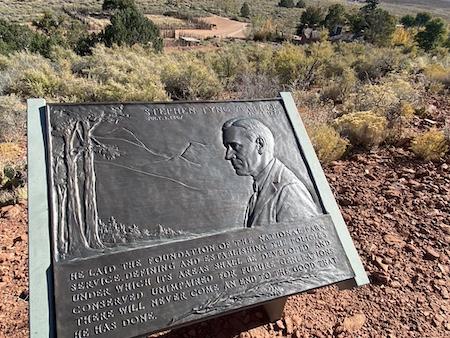
Winsor Castle at Pipe Spring National Monument/NPS
In the arid, desert Southwest, water is life, and the springs at Pipe Spring National Monument have long sustained Indigenous people, early explorers, and Mormon immigrants. The Northern Kaibab Paiute band has depended on these perennial springs for centuries and, more recently, European settlers have as well. In 1776, the Dominguez-Escalante expedition passed within 8 miles of the springs, on their return to Santa Fe, but it wasn’t until 1858 that Mormon missionaries found them and began to rely upon them.
And a more scenic, but desolate, spot can’t be found in the Arizona Strip country. Cool, clear, clean water pours from the base of the south-facing Vermilion Cliffs, a welcome oasis for today’s visitors as well.
Dr. James M. Whitmore began his cattle operation here in 1863, only to be killed three years later by Navajo Indians. In 1870, Brigham Young had the Mormon Church’s cattle herd moved and the Winsor Castle (also known as The Fort) was built, complete with gunports. Cold water was diverted into the spring room, to keep milk, butter and cheese cool. At one point, more than 100 cows per day were hand-milked, with the cheese and butter sent to the new settlement at St. George. And during the late 1800s, it also became a hideout for polygamist wives, hiding from federal troops.

An overlook of Pipe Springs from the hiking trail/Patrick Cone
Of these springs, the Main Spring has been the largest, but decreased over the past 40 years, ceasing to flow during the summer of 1999, the result of groundwater pumping by the North Kaibab Paiute band. But three others still flow, including the Tunnel Spring, which discharges about 11 gallons per minute.
Today, visitors can take a guided tour of the fort, hike the trails above, tour the museum of the early years and Indigenous cultures, and take part in plenty of events. And this year, 2023, is the centennial year for Pipe Spring, with night sky parties, barbecues, music, and storytellers, all culminating December 2 with Winsor Castle by Night. With lighted lanterns and decorations from the 1870s, rangers and volunteers will share roasted pine nuts and hot cider, while you can join in singing the carols and listen to Southern Paiute stories.

Exhibits in the monument's museum tell the history of the region/Patrick Cone
It was 100 years ago this year, that the National Park Service’s first director, Stephen Mather, determined that Pipe Spring should be designated a national monument. Just two years previously, Zion National Park was established. Mather was encouraging auto touring, and thought this a perfect spot to visit between Zion and the Grand Canyon.

Stephen Mather, the first director of the National Park Service, personally called for Pipe Springs to be added to the park system/Patrick Cone
Just 15 miles from Fredonia, Arizona, the Pipe Spring's museum showcases a dozen new exhibits, which tell the story of the Kaibab Paiutes, other tribes, the Mormon settlers, as well as the modern-day Indigenous nations. During the short walk from the visitor center, you’ll pass beneath giant cottonwood trees, alongside spring-fed pools, old wagons, and artifacts that dot the ground. A couple of horses and well-mannered longhorn steers call the old-style corral home. During warmer months you can enjoy the bounty of the orchard, with heirloom peaches, apples, apricots, and plums, as well as grapes.

Pioneers made cheese and butter to sell to settlers at St. George/Patrick Cone photo of cheese vat
A couple of stone cabins have been restored, with exhibits about the cowboy days and the efforts to preserve the history. The half-mile Ridge Trail is worth the effort as you look out across the desert, with interpretive signage on the geology, history and vegetation of the area.
Pipe Spring National Monument is a terrific stop as you tour the Southwest parks and welcome shade on a hot day. It offers a great place to reflect on days gone by, and the incredible effort that early pioneers took to survive in this harsh environment.



Add comment